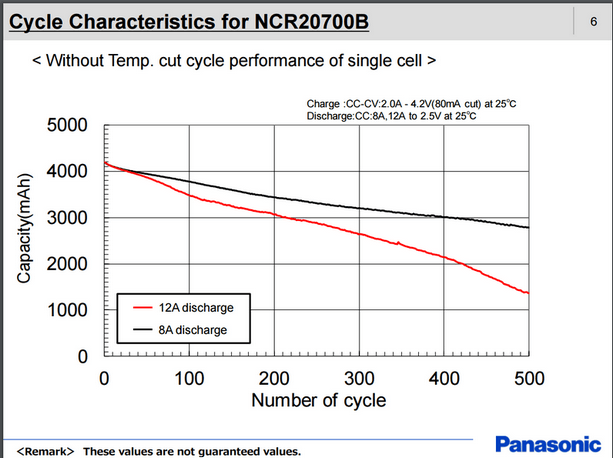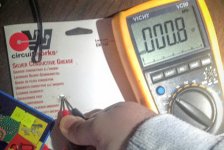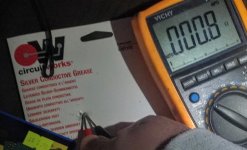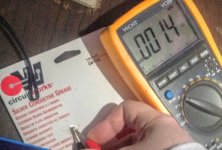DasDouble
100 kW
Subsribed
TheBeastie said:Yeah I recommend copper foil with one side being adhesive, like how it is here... and you place the copper over the points and then place the nibs on the inside (adhesive side) and push it down over the cell to insure good contact..
I am assuming you want to add solder to increase thickness?Tushar D said:TheBeastie said:Yeah I recommend copper foil with one side being adhesive, like how it is here... and you place the copper over the points and then place the nibs on the inside (adhesive side) and push it down over the cell to insure good contact..
I had this idea inspired by your idea of using the self adhesive copper foil.
How about if we solder the copper tape before sticking it to the magnets. This way we avoid heat damage to the magnets and have good solid connection. Just a thought. My idea might be redundant, but i thought it would be worth sharing the idea.
Don't know if you have read the whole thread but x-speed said it lowers resistance by about 10 times sanding and cleaning each cell terminal, I sanded and cleaned it with acetone.. Also if I wasn't going to put the copper on with in an hour or so of sanding and cleaning I would do it again before I resumed the pack build as the amount of micro corrosion gets unacceptable apparently, refer to x-speeds posts on it for more details.Tushar D said:Hi Beastie
So would you suggest sanding the 18650 terminals or leave it as it is?
If we could stick the magnets to the copper sheet and place it on terminal we can easily remove it whenever we want. Would you suggest doing that?
Thanks
TheBeastie said:I am still surprised by the level of some amps people try to squeeze out of 4P 18650 setups on soldered/spot welded packs that I think are beyond the rating of 18650s for long-term health of cells.. I think P4 is only good for 250w kits on 18650 cells for getting a lot of cycles in return.
That conductive grease/paste looks interesting but its specified resistivity looks a bit ordinary at "Resistivity 82 ohm·cm"Hummina Shadeeba said:Got lg chemicals 847 conductive paste but was thinking of plating copper with a very thin layer of silver to stop oxidation
http://www.finishing.com/faqs/silverathome.shtml
The contacting surface of positive terminal to copper strip is magnitudes larger the usual conducting strip cross section (at D of 7mm it is EDIT: 38mm2).Hummina Shadeeba said:Got lg chemicals 847 conductive paste but was thinking of plating copper with a very thin layer of silver to stop oxidation
http://www.finishing.com/faqs/silverathome.shtml
TheBeastie said:I am assuming you want to add solder to increase thickness?Tushar D said:TheBeastie said:Yeah I recommend copper foil with one side being adhesive, like how it is here... and you place the copper over the points and then place the nibs on the inside (adhesive side) and push it down over the cell to insure good contact..
I had this idea inspired by your idea of using the self adhesive copper foil.
How about if we solder the copper tape before sticking it to the magnets. This way we avoid heat damage to the magnets and have good solid connection. Just a thought. My idea might be redundant, but i thought it would be worth sharing the idea.
I used solder on the copper tape to connect the end terminal discharge wires but thats the only place, I had left enough spare distance copper on the ends to solder them on without affecting the magnets.
I first ordered "copper sheet" from ebay when first trying to build this pack but it was way too thick. So I gave up on that and just went to the copper foil that is single sided adhesive.
Probably one thing I wouldn't have minded doing with the build is had at least a tiny bit thicker foil.. I could of got away with something a tiny bit thicker..
To give you an idea of the thinness of the current copper foil I used, when I was using rough sandpaper on the bare 18650 terminals which left a lot of easily visible scratch marks and then placed the copper foil on top/nibed it and then pulled it off to examine the copper foil you could see the inverted etching of the marks from the 18650 terminals on the copper so it was clear there was serious contour and contact (good)..
I considered the idea of using chemicals to clean away one sheet of copper foil tape and then just double the layer so it was overall thicker but I didnt bother.
Maybe this copper foil below is the answer, its got no adhesive side so you can just add two layers of copper and glue the magnet into place on top..
http://www.ebay.com/itm/1pcs-99-9-Pure-Copper-Cu-Metal-Sheet-Foil-0-05-x-100-x-1000-mm-E3-0051-/181443383724?hash=item2a3ede51ac:g:ftoAAOxyrM5TIY1~
Titled "99.9% Pure Copper Cu Metal Sheet Foil 0.05 x 100 x 1000 mm #E3-0051" incase the ebay link dies..
I am still happy with my build. I checked the voltages of it at the end of my last complete ride/discharge last week and they were all very even..
Lately I been riding with PAS level 4 which draws about 500-600w of power and just purely dry pedaling in high gear so no effort at all from me except looking like I am pedaling and its still working fine.
I am still surprised by the level of some amps people try to squeeze out of 4P 18650 setups on soldered/spot welded packs that I think are beyond the rating of 18650s for long-term health of cells.. I think P4 is only good for 250w kits on 18650 cells for getting a lot of cycles in return.
If you want to build a pack like mine and beat the shit out of it with high amp draw you should do some testing before hand.
If you look at any decent 18650/20700 cell discharge/cycles chart you will see the heavier the discharge the faster the cell dies... Or another way to look at it is less total capacity due to abusive level of discharge as another graph for uneven voltages in cells/stuffed shitty battery pack..
Very high end 20700 cell here that's getting pretty shitty quite quickly due to excessive discharge even if its 'rated' for it.

If you look at a Tesla EV battery pack the connections between each 18650 cell are tiny. The reason Tesla can give a good warranty on the battery pack is because they aren't beating the hell out of the cells with heavy amp draw. Wanting overly thick connections on the cells can be viewed as bad engineering.
https://chargedevs.com/features/a-closer-look-at-wire-bonding/
quuxman said:TheBeastie said:I am still surprised by the level of some amps people try to squeeze out of 4P 18650 setups on soldered/spot welded packs that I think are beyond the rating of 18650s for long-term health of cells.. I think P4 is only good for 250w kits on 18650 cells for getting a lot of cycles in return.
Actually, according to this research paper which is studying NCM cells, the sweet spot for longevity is actually 2C:
http://www3.aiche.org/proceedings/content/Annual-2013/extended-abstracts/P314218.pdf
That means the ideal discharge rate for 4p 3Ah cells in a typical ~50V pack is 1200W.
On your copper foil, is it really .05mm thick? Wouldn't that create substantial heat? I may have done it incorrectly, but I calculated that even the .25mm copper that snath uses would create a few watts of heat in the pack, so I'm actually planning on using .5mm thick copper, which I should still be able to dimple and fold with pliers no problem. Perhaps this is entirely over-kill.
Your technically looking at it from a one? or is that two? dimensional point of view, from my point of view my copper is "6cm thick"... With sheet wiring you got to think a bit more about the surface area gain.. Even if the 18650 positive terminal has 8mm wide surface contact if I rolled up 8mm of sheet copper it turns into a decently thick wire.Hummina Shadeeba said:Overkill with the .5mm?!?!? I was going to do .4 after looking at ampacity stuff but read .05mm being used at 600 watts.




